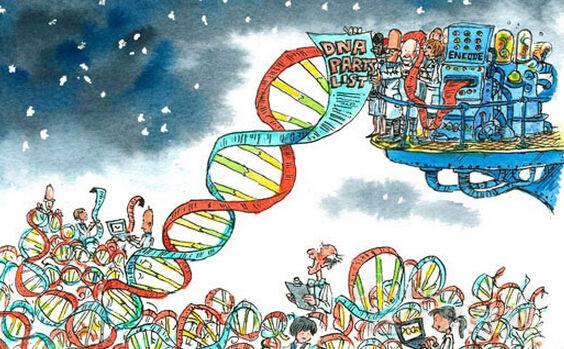The UK has developed a new blood disease panel using large-scale genome-wide sequencing data
British researchers have used 5,000 whole-genome sequencing data, more than half of which are from patients with blood or immune diseases, and developed a targeted NGS panel for the detection of hereditary hemorrhagic, thrombotic and platelet diseases. Published in the journal Blood, the study shows that large-scale sequencing projects can be transformed into clinical applications.
The panel analysis was completed by researchers at the ThromboGenomics consortium and is scheduled to be provided free of charge to the National Health System (NHS) clinicians in 2016 and operated at the University of Cambridge laboratory.
The sequencing and subsequent analysis of the study is part of the UK NIHR BioResource Rare Diseases Program, which aims to sequence rare-patient patients, identify disease-causing genes, and use these results to develop better diagnostic tests.
Willem Ouwehand, head of the NHS Blood and Transplant Research Group and chairman of the Thrombosis Genomics Consortium, said: "We have sequenced the genomes of thousands of patients and shared data between labs for free. So we can more quickly determine whether a gene is It's related to the disease. Thanks to the large amount of data shared between the labs and the large number of genomes that have been sequenced, the team was able to convert from sequencing to clinical testing in a short period of time. Once the research team has selected a gene, it will take 6 weeks to verify.

New panel expands the range of genetic testing for blood diseases
In 2009, before the true emergence of NGS technology, the alliance had found 34 genes associated with hereditary bleeding, thrombosis and platelet disease. The new panel developed this time has been increased to 78 genes, of which 63 genes were first verified. The research team found 15-20 genes in the study sequencing work, and the remaining genes were added according to recently published studies. Ouwehand expects 200 genes to be added in the next two years.
The researchers conducted a panel test on 300 patients and found that 159 people had known pathogenic mutations, 61 were unable to determine the cause, and 80 did not carry mutations. Of the 61 patients with undetermined etiology, 56 detected suspected mutations, including 29 pathogenic mutations and 28 possible pathogenic mutations. For five patients who could not be diagnosed, the researchers thought it was impossible to judge whether it was due to lack of sensitivity or because these patients did not have a genetic disease (but an acquired blood disease). In the assay, the researchers used Roche NimbleGen for capture and the Illumina HiSeq2500 for DNA sequencing. The detection covers the complete exon region, partial intron and UTR region of the gene.
Product type: Special for milk tea, coffee, ice cream, cereal, baking, seasoning, soup, etc.
Applications: milk drinks, vegetable protein drink,coffee, seasoning,solid beverage, soft beverage,baked goods, confectionery, chocolate,jelly,ice cream and so on.
Non dairy cream also known as vegetable fat powder, Milk Replacer, coffee whitener.
Non Dairy Creamer,Vegan Non Dairy,Filled Fat Milk Powder,Non Dairy Coffee Creamer
KARAK , https://www.jskarak.com